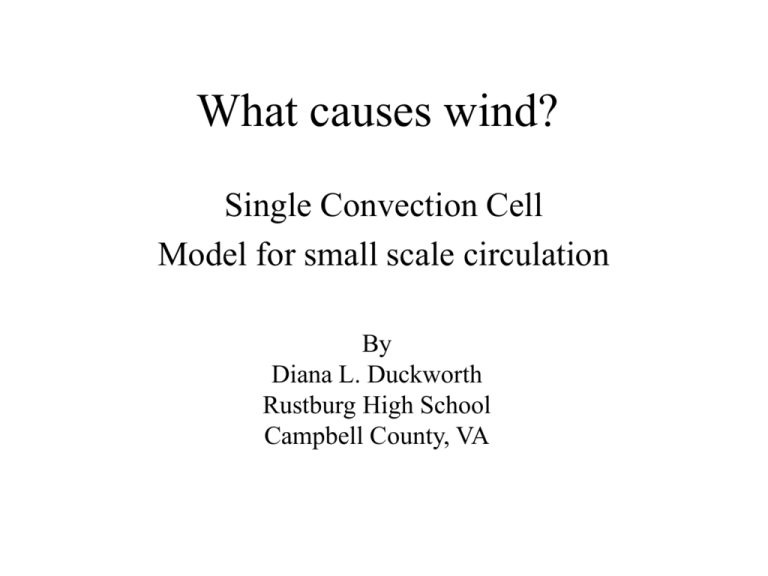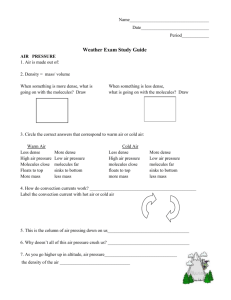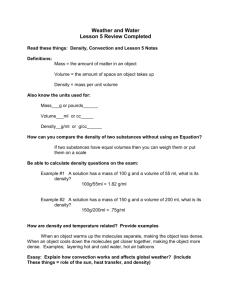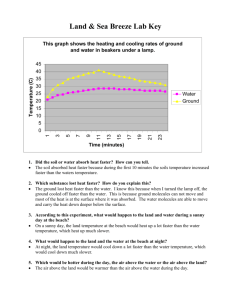Single Convection Cell
advertisement

What causes wind? Single Convection Cell Model for small scale circulation By Diana L. Duckworth Rustburg High School Campbell County, VA Air Pressure Basics • Air pressure is the weight of a column of air • Depends on pull of gravity, mass of molecules & kinetic energy of molecules (temperature directly related when confined) • Average weight of air on a 3 bedroom ranch house is the equivalent of 1500 automobiles! • Pressure exerted is equal in all directions • Pressure decreases with altitude, air is less dense at high altitude; fewer molecules above Measurement of Air Pressure • Barometer or barograph (records) • Common units are inches of mercury – Sea level pressure 29.92 in • Scientific units are millibars – Sea level pressure 1013.25 mb • Highest pressure was 1083.8 mb (32.01 in) • Lowest pressure was 870 mb (25.69 in) (prior to 2005 hurricane season) C B C In the beginning - a side view of atmosphere D A • Pressure at A = pressure at D • Pressure B = pressure at C • A & D pressures greater than C & D pressures • More molecules over A or D than C or B D LOW C HIGH B Heat Earth at A D COLD LOW C As air rises it expands. Expanding air cools adiabatic cooling A D HOT COLD • Air at A will be heated by Greenhouse Effect • Air at A will be less dense, so it rises to B • Thus air pressure at B increases compared to C – more molecules at B than C LOW C HIGH B LOW C LOW A HIGH D HOT COLD Upper troposphere winds HIGH D COLD • Air will move horizontally from high to low • From B to C called upper troposphere wind • Makes pressure at D greater than A – More molecules over D than over A • As air moves from B to C it cools by radiation LOW C HIGH B LOW C Sinking air is compressed Becomes warmer adiabatic warming HIGH D COLD LOW A HIGH D HOT COLD • Air flows from high at D to low at A • Creates surface winds • Cold dense air at C sinks to D, replacing air that moved from D to A • Completes convection cell LOW C HIGH B LOW C LOW A HIGH D HOT COLD Conclusions HIGH D COLD • Vertical Motions caused by density differences • Rising air creates a surface LOW and an upper troposphere HIGH • Sinking air creates a surface HIGH and an upper troposphere LOW LOW C HIGH B LOW C LOW A HIGH D HOT COLD Conclusions HIGH D COLD • Air moves horizontally (WIND) as a result of a pressure gradient • Moves from a high pressure to a low pressure • Wind blows into a LOW - converges • Wind blows out from a HIGH - diverges LOW C HIGH B LOW C LOW A HIGH D HOT COLD Conclusions HIGH D COLD • Upper level winds blow in opposite directions from lower level winds. • Upper level pressure systems are the opposite of lower level pressure systems.






